Eviction nears for North Dakota pipeline protesters
- Published
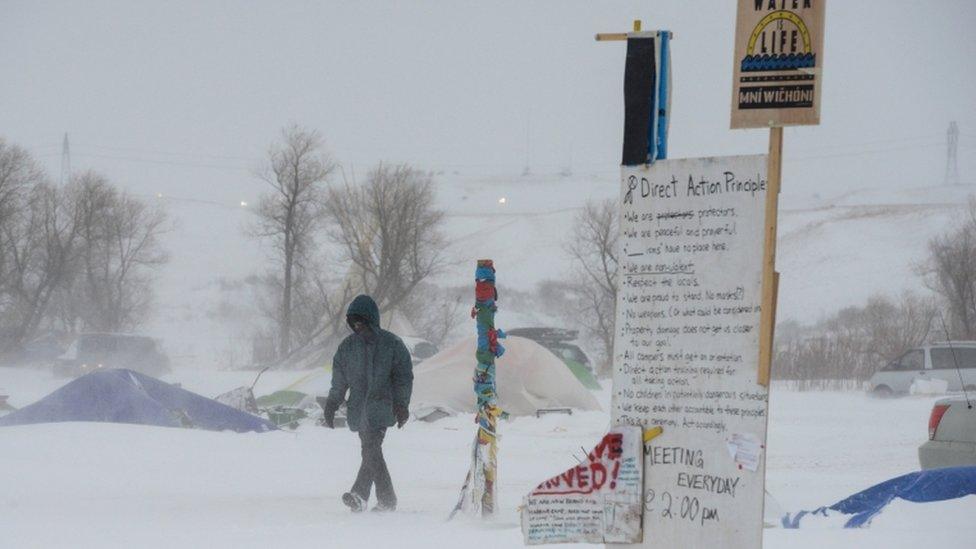
So-called 'water defenders' fear that law enforcement will violently evict them from their protest camp
Protesters in North Dakota are bracing for a showdown after state and federal officials ordered them to vacate their largest encampment.
About 3,000 demonstrators, mostly Native Americans, say the Dakota Access Pipeline threatens water supplies and sacred lands.
They have until 5 December to quit the Oceti Sakowin camp, says the Army Corp of Engineers, which owns the land.
Separately, North Dakota's governor has issued an emergency order to evacuate.
The emergency evacuation order, external, signed by Governor Jack Dalrymple on Monday, cites a snow blizzard as the reason for enforcing the removal of the Oceti Sakowin camp.
"Emergency services probably will not be available under current winter conditions," he says, after nearly six inches (15 cm) of snow fell near the protest camp, making nearby roads nearly impassable.
More than 200 tribal nations have united behind the cause, representing the largest alliance of indigenous people in the US in centuries.
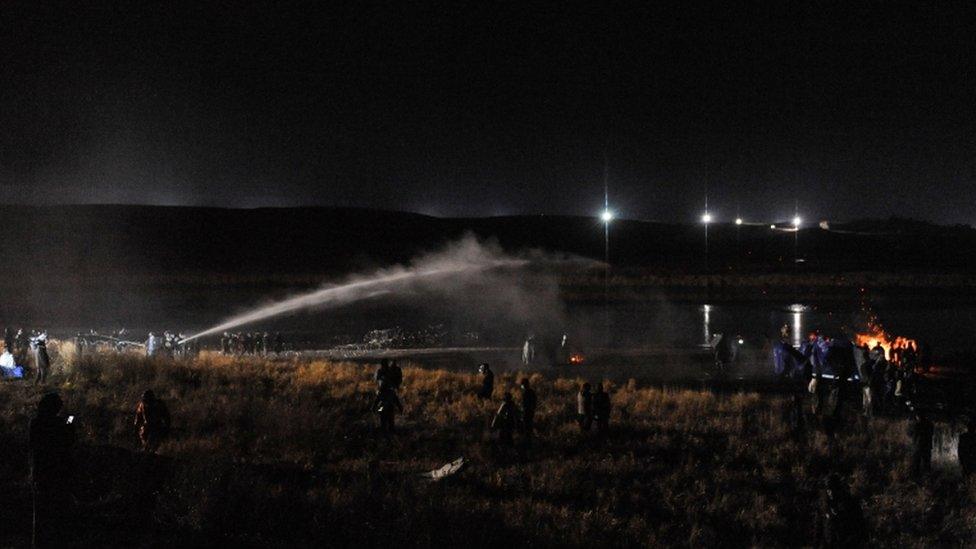
Police previously cleared a satellite camp, by using water cannons in sub-freezing temperatures
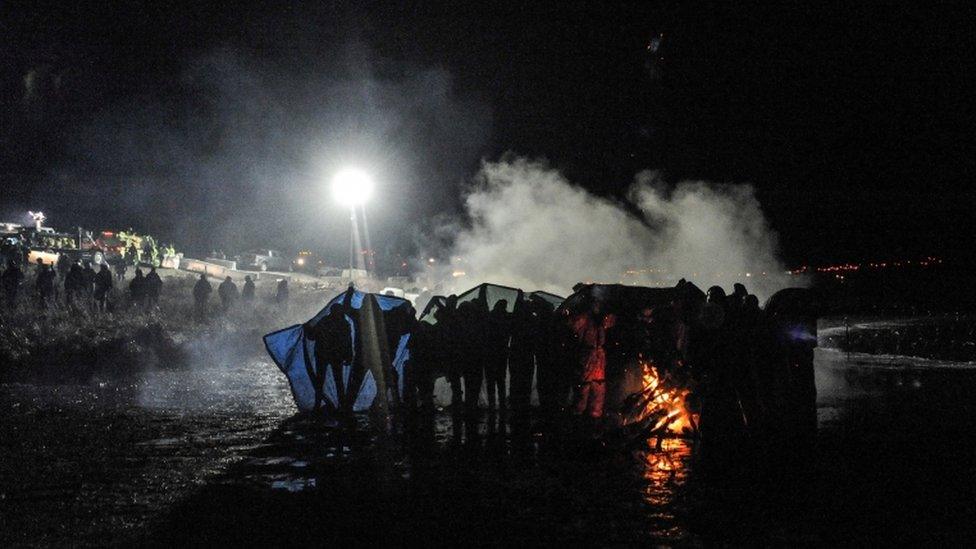
Hundreds of activists have been arrested during the months-long protest
Dave Archambault II, the chairman of the Standing Rock Sioux, called the order "a menacing action meant to cause fear" and called upon authorities to affirm that they will not forcibly remove demonstrators.
"The most dangerous thing we can do is force well-situated campers from their shelters and into the cold", he added, criticising the police's previous use of high pressure water cannons in sub-freezing temperatures.
Protesters have spent months resisting the construction of the $3.8bn (£3bn) oil pipeline, which would cross the ancestral lands of the Sioux Nation and pass underneath the Missouri River.
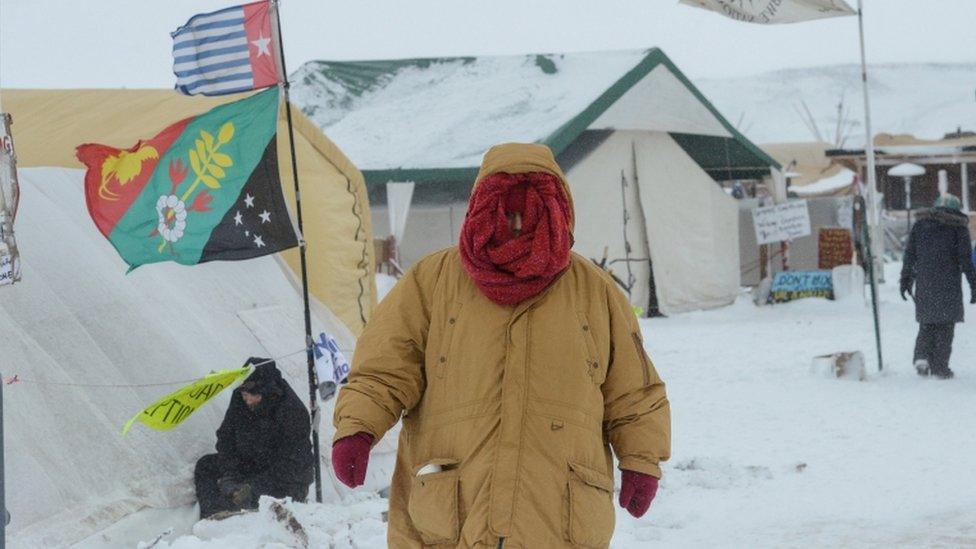
Blizzard conditions have set in at the protesters main encampment
The protest effort have brought together Native groups from around the US, making it the largest alliance of tribes that the country has ever seen.
The 1,200 miles (1,900km) long pipeline - which will carry crude oil from North Dakota to Illinois - has already been completed, except for the small section passing near Native American land.
The Obama administration has called upon the pipeline's owners to reroute it, in order to bypass the disputed land.

Blockade
On Tuesday, local police began to limit supplies from entering the protest camp near the Standing Rock reservation in a bid to close it down.
Facing criticism, Morton County Sheriff's Office has since told Reuters news agency it will take "a more passive role" in enforcing the blockade,
The ban on supplies, including food, fuel, and building materials, was briefly enforced as part of the governor's emergency evacuation order.
Protesters have previously, external accused officials of embargoing vital supplies through a series of roadblocks - some of which have been in place since August.
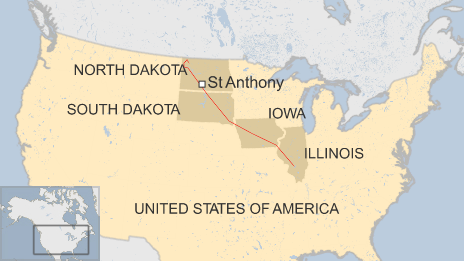
The Army Corps of Engineers has also clarified its position on the evacuation of the camp in recent days, stating on Sunday that they have "no plans for forcible removal".
Instead, the federal agency said, resident protesters would be subject to fines.
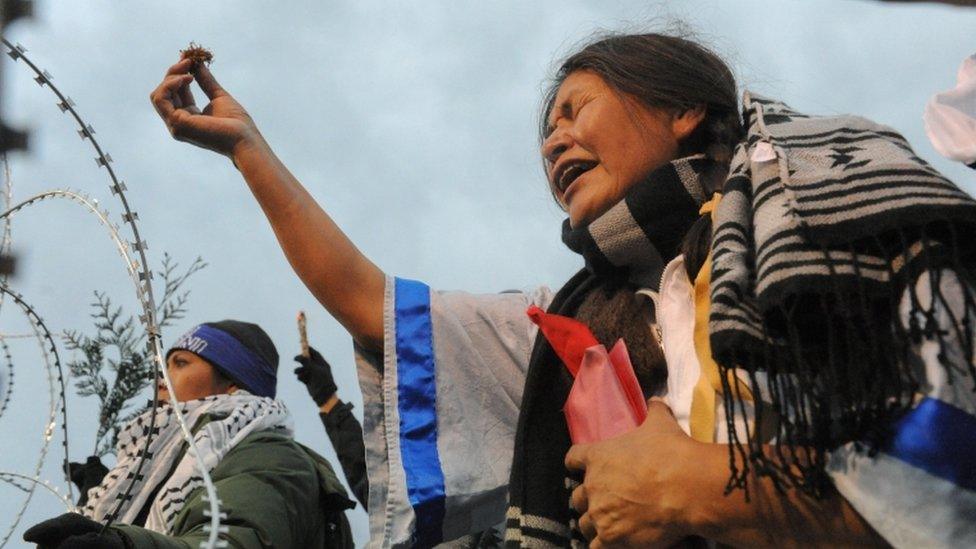
A Native American protester makes a ceremonial tobacco offering
In the past week, hundreds of US military veterans have arrived with the goal of "protecting the protesters", a Marine Corp veteran told Stars and Stripes, external.
Their posture at the camp shows "symbolic value", said Anthony Diggs, who is acting as a spokesman for the group.
"Veterans Stand for Standing Rock" plans to remain at the camp until 7 December - after the deadline to vacate.
Police have made nearly 575 arrests since the protest began over the summer, creating a huge strain on the state's legal system.
"We don't have sufficient judges to get all of those cases heard in a timely fashion," said Sally Holewa, North Dakota's state court administrator.
Only about 8% of those arrested come from North Dakota, with nearly a quarter coming from the West Coast, according to arrest figures from Morton County.
- Published21 November 2016
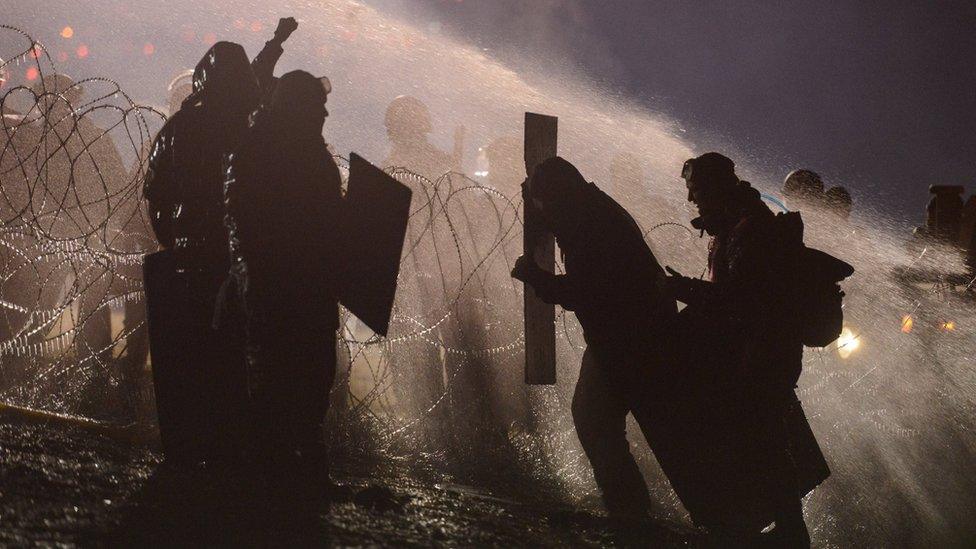
- Published28 October 2016
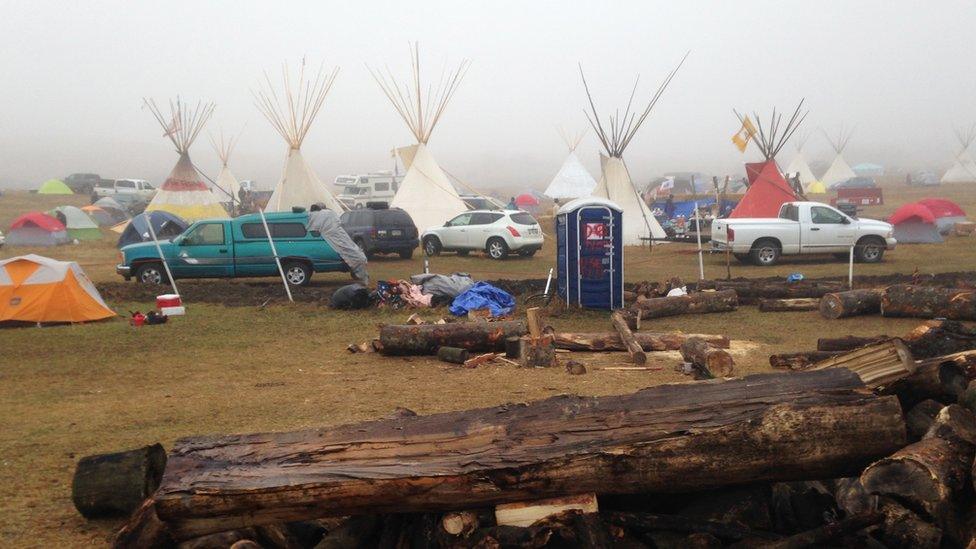
- Published2 September 2016